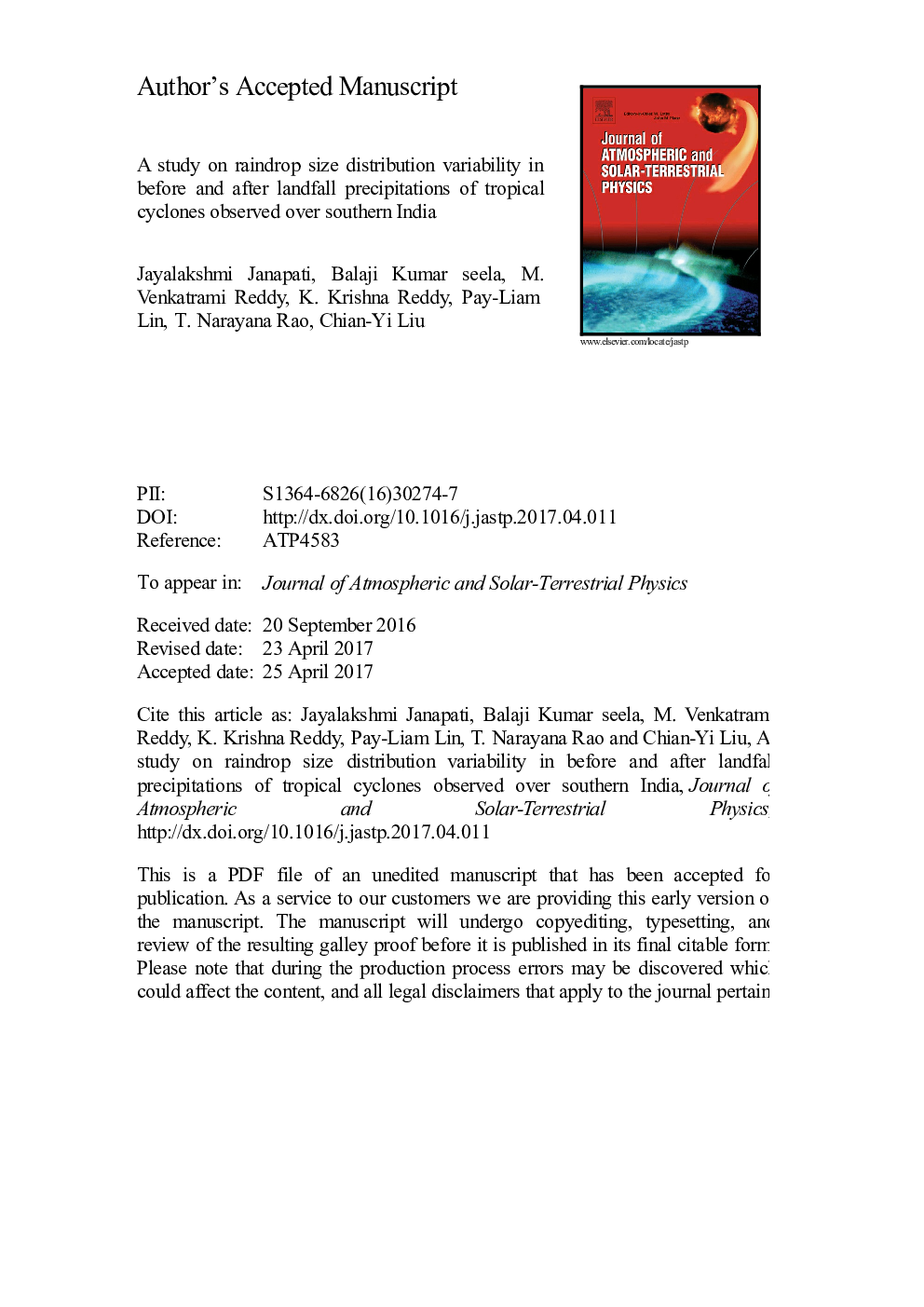| Article ID | Journal | Published Year | Pages | File Type |
|---|---|---|---|---|
| 5487607 | Journal of Atmospheric and Solar-Terrestrial Physics | 2017 | 61 Pages |
Abstract
Raindrop size distribution (RSD) characteristics in before landfall (BLF) and after landfall (ALF) of three tropical cyclones (JAL, THANE, and NILAM) induced precipitations are investigated by using a laser-based (PARticleSIze and VELocity - PARSIVEL) disdrometer at two different locations [Kadapa (14.47°N, 78.82°E) and Gadanki (13.5°N, 79.2°E)] in semi-arid region of southern India. In both BLF and ALF precipitations of these three cyclones, convective precipitations have higher mass weighted mean diameter (Dm) and lower normalized intercept parameter (log10Nw) values than stratiform precipitations. The radar reflectivity (Z) and rain rate (R) relations (Z=A*Rb) showed distinct variations in BLF and ALF precipitations of three cyclones. BLF precipitation of JAL cyclone has a higher Dm than ALF precipitation. Whereas, for THANE and NILAM cyclones ALF precipitations have higher Dm than BLF. The Dm values of three cyclones (both in BLF and ALF) are smaller than the Dm values of the other (Atlantic and Pacific) oceanic cyclones. Interaction of different regions (eyewall, inner rainbands, and outer rainbands) of cyclones with the environment and underlying surface led to RSD variations between BLF and ALF precipitations through different microphysical (collision-coalescence, breakup, evaporation, and riming) processes. The immediate significance of the present work is that (i) it contributes to our understanding of cyclone RSD in BLF and ALF precipitations, and (ii) it provides the useful information for quantitative estimation of rainfall from Doppler weather radar observations.
Related Topics
Physical Sciences and Engineering
Earth and Planetary Sciences
Geophysics
Authors
Jayalakshmi Janapati, Balaji Kumar seela, Venkatrami Reddy M., Krishna Reddy K., Pay-Liam Lin, Narayana Rao T., Chian-Yi Liu,
